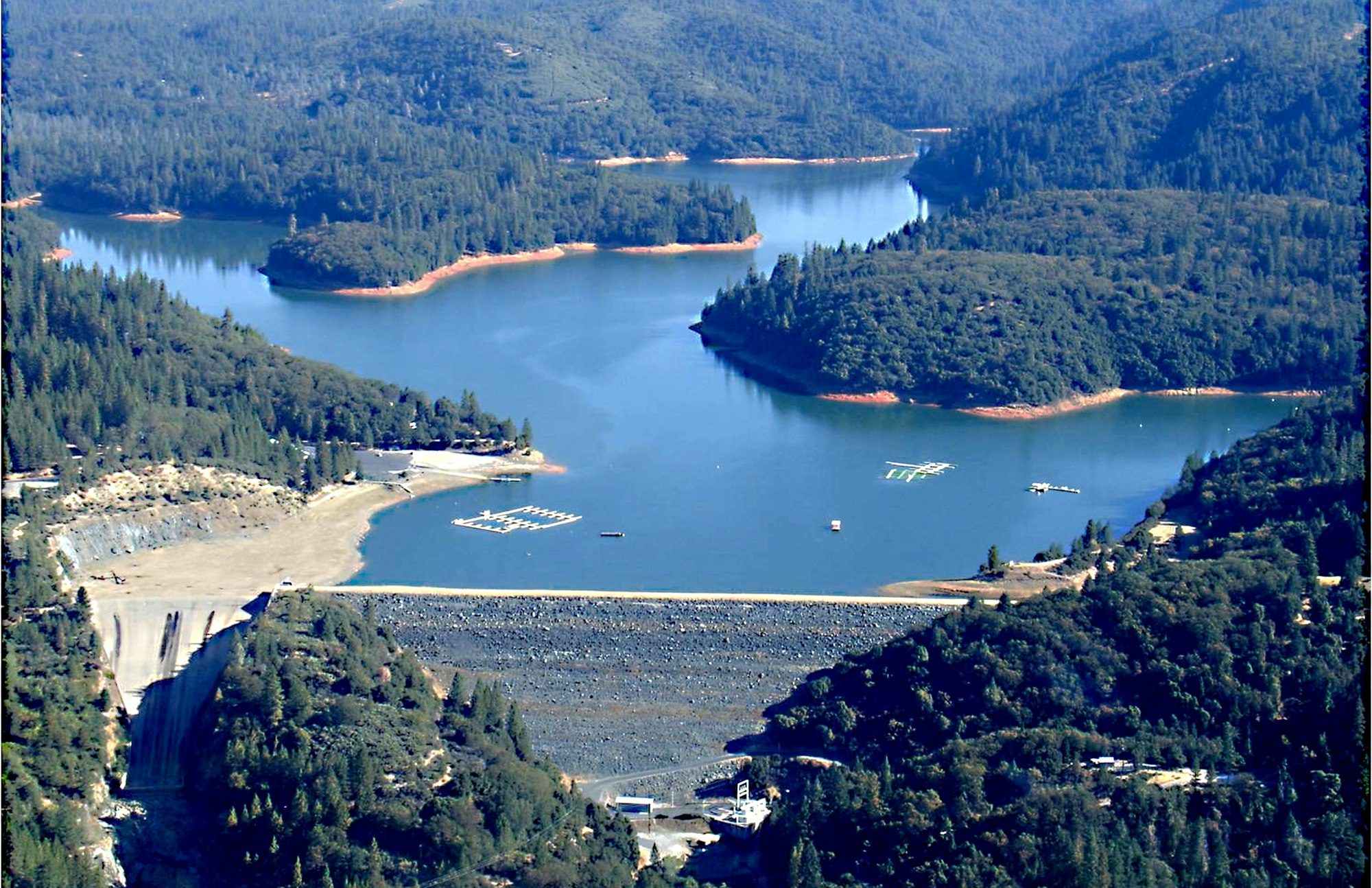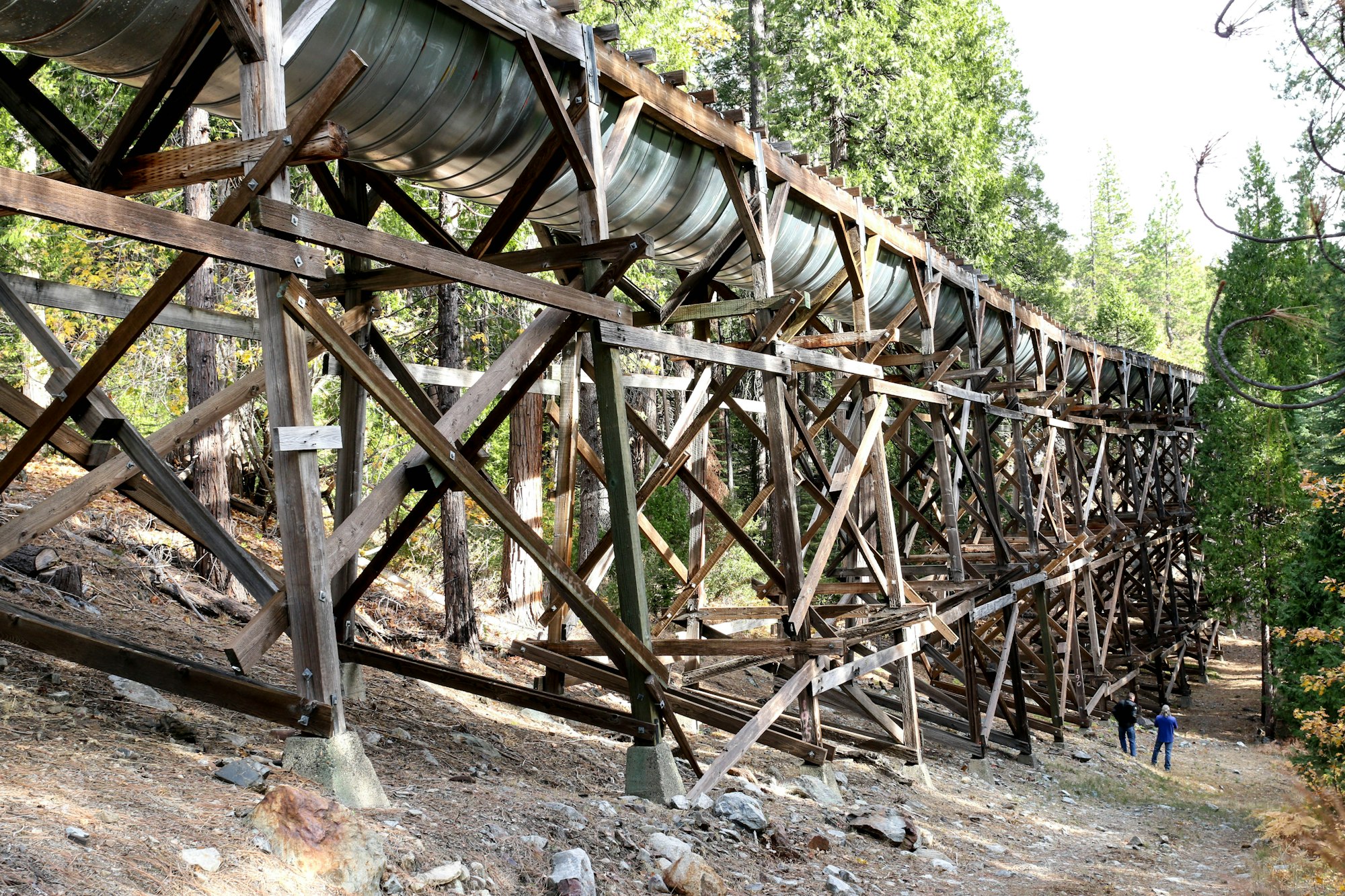NID Feature Story: Water infrastructure: what it takes to deliver water to you
The words “water infrastructure” have been making headlines lately in California and across the nation. In news stories and government websites, reports stress all the work needed to upgrade aging structures and systems.

So what exactly is water infrastructure? And what does it mean to you for everyday life? For NID, infrastructure is what it takes to deliver water for your use. That means the efforts that are necessary to move, clean, store and safeguard water, so it reaches you when you want and need it.
At Nevada Irrigation District (NID), infrastructure includes dams, reservoirs, treatment facilities, canals, conduits and pipes. In addition, the district generates hydroelectricity, which requires powerhouses, afterbays and forebays.
That’s a lot.
NID’s infrastructure isn’t just structures you might stumble over. Much of it is out of sight, and the facilities stretch from elevation 7,000-feet high in the Sierra Nevada to our neighborhoods in the foothills and down to the City of Lincoln.

To help sort out the complexities, we’ve created the NID Infrastructure Library, which breaks down every facility and component with descriptions, maps and graphics. You can even learn about what infrastructure is near you. Check it out, click here.
Dating back to the Gold Rush
Much of the NID infrastructure is steeped in regional history. For 100 years, NID has served customers in Nevada, Placer and Yuba counties. What began as an old reservoir and canal system serving mines during the California Gold Rush has been transformed into a modern water distribution system. Still, the origins of the facilities can still be seen, if you know where to look.

Consider the South Yuba Canal, which is the lifeblood of Nevada County. The canal is NID’s primary water conveyance that moves water from the headwaters – from the Jackson Meadows, Bowman and Spaulding area – all the way down to just-above Scotts Flat Reservoir. This canal plays a key role in not only keeping the reservoir full for popular recreational activities; it is the primary water supply conveyance for NID’s customers throughout Nevada County, including Nevada City and Grass Valley.

The canal, built from 1854-1858 by the South Yuba Mining and Canal Company, delivered endless flows to be used downhill in hydraulic mining. The water fueled high-pressure water cannons that blasted the mountainsides and dispersed rocks weighted with gold.
The canal traverses 19 miles “of some of the most rugged terrain you are going to find in the Sierra,” according to Chip Close, NID Director of Operations. For example, the construction of a waterway path along the side of a granite mountain was completed by men hanging over ledges in slings to drill and blast for anchors.
See for yourself – NID employees show you what they do
What it takes to deliver water to you is complex. NID employs more than 200 men and women to get the job done.
To show you examples of what is required, we’ve created short videos highlighting different infrastructure components. In each, NID employees will tell you about their roles in keeping the system operating efficiently so you get reliable deliveries of water.

Anatomy of a Powerhouse – “It’s pretty unique”
Now, this is something you have never seen before. Come along for a tour inside the NID hydroelectric powerhouse at Dutch Flat.
Background: Dutch Flat No. 2 Powerhouse is an off-stream powerhouse on the Bear River. It was constructed in 1964-65 as part of the Yuba-Bear Hydropower Project. The powerhouse is rated at 24.57 megawatts (MW).

Surveying Dams for Safety – “We used to just measure by stringline in the old days”
As a safety measure, the NID survey team monitors the dam at Lower Scotts Flat to check for horizontal and vertical movement.
Background: NID surveyors constantly monitor the District’s dams as a safety function. Data is logged over time to provide information regarding the effects of aging, earthquakes, erosion, storm events, and other variables on the overall health of the dam.
Back in the day, surveyors used stringline to measure a dam and see if it was deformed. Today, technology allows surveyors to be absolutely precise with their measurements. So how is it done? Watch the video (2:07 minutes), click here.

Dutch Flat #2 Flume Repair – “There’s always something to do”
The flume ultimately sends water into Rollins Reservoir. It is constantly monitored, yet two weeks in every year, water is drained so crews can make repairs and make sure the 1960s structure is sound. And yes, those are NID trucks in the flume – it’s that large.
Who gets NID water?

NID provides drinking water to 19,800 connections (more than 56,000 people) and, by contract, supplies water to Nevada City, Grass Valley, and small portion of the City of Lincoln for use within their respective municipal treated water service areas.
The district operates a network of more than 475 miles of canals and 411 miles of pipelines to transport water to a diverse agricultural customer base. These distribution facilities provide irrigation water to around 5,200 customers. Enough water to irrigate water more than 33,000 acres.
What’s the big deal about infrastructure?
Infrastructure is what makes our way of life possible. When you turn on the tap, shower, soak your garden or flush the toilet, the water you need is there. That’s thanks to the reservoirs, canals, pipes and more it takes to deliver it to you.
NID is dedicated to delivering water for life—water that supports the lifestyle, values, and safety of our community. And that’s made possible through all the infrastructure running through the district.
(Published by Yubanet, March 2024)
